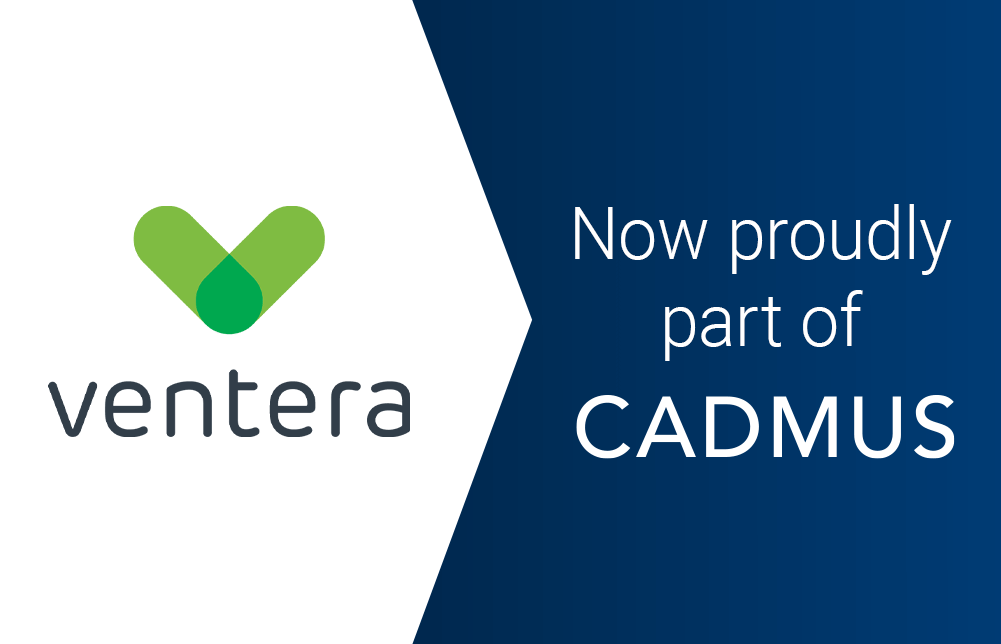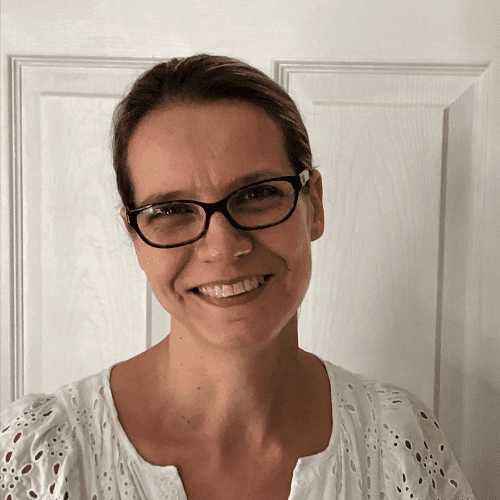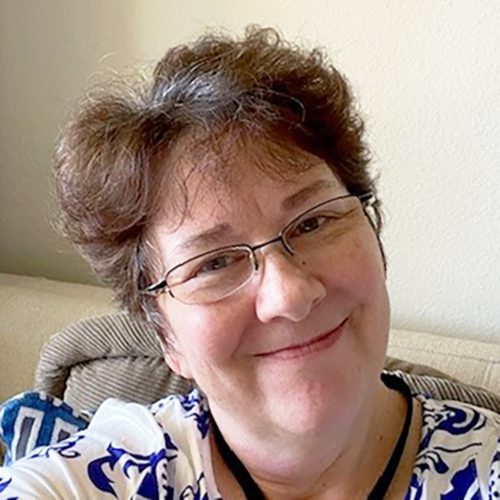A special profile featuring the head of Ventera's Government Health Portfolio


Sankar Subramanian
Vice President of Government Health
1. Why did you choose Ventera and how long have you been with the company?
I joined Ventera in April 2000 so my decision to work at Ventera goes back 25 years. Things were very different in the IT industry back then. Green terminals and GUI-based technologies were slowly giving way to internet/web-enabled systems and technologies.
Getting into the IT workforce after college in 1994, I worked both in India and Hong Kong before coming to the U.S. in 1997. I started working as an IT consultant at Coopers & Lybrand (C&L) mostly focused on databases, data warehouses, and business intelligence engagements.
Ventera was founded by a C&L colleague of mine, Robert Acosta, as a boutique IT development shop. Many of my C&L colleagues, including my lead at that time, went on to join Ventera.
I joined Ventera because of my desire to work for a smaller company where you could prove yourself quickly and have opportunities to grow. Ventera gave me the chance to advance my career in IT, and eventually get to manage small to large IT programs and deliver meaningful outcomes to our customers.
2. What are you most proud of from your time with the company?
As an immigrant, Ventera not only gave me the opportunity to grow my career but also helped me navigate the arduous path to becoming a U.S. citizen in 2011.
To date, I am truly proud of my decision to join Ventera back in 2000. It has been a great place to work with a strong focus on employee growth and empowerment, while also maintaining a fun environment that prioritizes serving the community in many ways. Through many ups and downs I have made many valuable friendships and worked with a great group of people to help grow the company to where it is today.
3. What is your current role and career growth trajectory at Ventera?
My primary role at Ventera is to lead and grow our government health portfolio.
Ventera is organized into two business units (BUs), government and commercial. I started at Ventera working for many commercial clients in the late 90s including Nextel, XO Communications, and some B2B e-commerce website/portal development projects.
In the early 2000s, I started working for our government BU led by Jeff Smith. Since then, I have worked in various capacities including as a technologist, project manager, program manager, and client/account/portfolio manager for Ventera’s Federal customers including the U.S. Department of Agriculture Food and Nutrition Service (USDA FNS), the Department of Veterans Affairs (VA), and the Department of Health and Human Services Centers for Medicare and Medicaid Services (HHS CMS).
Jeff and I have now been working together for 23+ years to position our government BU for success. This success is defined by winning projects that enable Ventera to do meaningful work to support our customer’s mission, as well as enabling Ventera to bid on task orders via multiple strategic contract vehicle capture.
During my time with the government BU, I have led the capture efforts for critical GWACs and IDIQs including NIH NITTAC CIO-SP3, NIH NITAAC CIO-SP4, GSA POLARIS, GSA OASIS+, and currently lead our ongoing work to capture NASA SEWP VI, GSA Alliant 3, and GSA COMET II.
4. How did you help Ventera get into the government health sector?
USDA FNS is Ventera’s first FedCiv customer with whom we started working in the late 90s. In 2004, we modernized their mission-critical system that manages the retailers participating in their Supplemental Nutrition Assistance Program (SNAP).
We have now worked with FNS for 20+ years supporting their mission for one of the largest Federal welfare programs in SNAP, along with a few others such as Women, Infants, and Children (WIC). This opportunity allowed Ventera to gain valuable experience and knowledge about SNAP, developing early parallels to CMS-run Medicare and Medicaid programs.
Moreover, I managed an OIT program at the Department of Veterans Affairs (VA) between 2011 and 2014 that provided Ventera with valuable insights into how the Veterans Health Administration (VHA), one of the three critical components at VA, managed a complex healthcare ecosystem providing services to veterans.
In 2015, we decided Ventera would be a good fit to work for CMS due to the experience we gained from the FNS social welfare and VA healthcare programs. I started traveling to Baltimore regularly to understand CMS’ mission, how they work with Federal contractors, their challenges, pain points, and critical needs. We learned that one of the centers within CMS was working to have a contract vehicle in place with support from the U.S. Digital Services (USDS) personnel to bring in vendors with experience leveraging Agile software development best practices including scaled Agile, human-centered design (HCD), cloud enablement, and DevSecOps to modernize their legacy IT systems. Ventera started doing Agile software development in 2008 for our commercial customers and we were familiar with the plays in the USDS Playbook, so the tenets of this contract vehicle aligned with our capabilities.
In 2016, we won a seat on the contract vehicle, and have been supporting CMS on their mission-critical large enterprise system development, legacy transformation/modernization, and cloud enablement for the last eight years.
5. How does Ventera work with Government Health customers? Is it any different than working with other agencies in the FedCiv sector?
From the perspective of IT systems development, our work across all agencies in the FedCiv sector leverages industry best practices in delivering the highest quality software products and services faster and with cost savings to the government. Ventera’s emphasis and embracing of all plays and related best practices from the USDS playbook allows us to:
- stay focused on iterative Agile development and delivery of functionality to production frequently.
- use HCD principles at the core of everything we do across the entire spectrum of IT development.
- transform and enable applications in the cloud for cost savings and efficient use of infrastructure resources.
- implement robust and matured DevSecOps processes and CI/CD pipeline to support on-demand as well as unplanned software delivery, and informed use of open-source technologies vs low-code/no-code aligned with the customer requirements.
At the business and domain level, Ventera’s approach to working with our Federal health customers is dictated by our thorough understanding of the vision and noble mission of the specific agency, how they help the U.S. citizen population receive quality healthcare, and our recognition of the big picture of how the IT system we are asked to develop helps deliver to that mission.
If there is one lesson learned for us working with CMS in the last eight years, it is that we should be prepared to understand the underlying policies or legislative mandates that govern the IT system requirements. We prepare our entire team, including our technical resources, to learn fast from the agency subject matter experts (SMEs) so they clearly understand the domain-specific nuances and intricacies of the software they are about to develop and deliver. We are most often required to augment our team with business and technical SMEs who have many years of relevant experience working with any specific Federal health agency.
To summarize, we need to put ourselves in our customers’ shoes every day, so we understand their mission and the citizen population they are tasked to support. For example, at CMS, it is about the quality of healthcare delivered to the Medicare and Medicaid beneficiaries and it is that humane and noble mission we need to embrace.
6. What makes Ventera’s engagement and delivery approach unique?
Everything for us starts with deeply understanding our customer’s vision and mission, the purpose of specific initiatives and the associated business objectives, and the problems and challenges those objectives are meant to address. Then it comes down to how agile and nimble we are to roll-up our sleeves and go to work with our customers daily to help support their requirements.
One aspect of our approach we are proud of is how our management and technical leadership invests in learning our customer’s mission and subject matter, and works together to create the most optimal, efficient, and innovative solution for any given problem. Our customers always have easy access to Ventera’s corporate and program leadership to collaborate and brainstorm innovative solutions.
As a small company invested in our customer’s success, we are always ready to engage and deliver to any scope changes within the confines of our contract. Our normal delivery cadence embraces Agile best practices to deliver software to Production iteratively, for our users to be able to use and provide valuable feedback to incorporate in subsequent iterations. This ensures that the product we deliver not only meets the business requirements but delivers a rich user experience and allows our users to spend less time in the system and more time on their daily mission-related duties.
Ventera is committed to always being ready to pivot and address any unplanned and emergent requirements that our customers face on any given day. For example, during the COVID-19 Public Health Emergency (PHE), Ventera was tasked by CMS multiple times to support urgent unplanned initiatives to help solve challenges related to the PHE. By having a strong technology foundation (such as cloud, matured DevSecOps pipeline, etc.), our Agile teams were able to collaborate with customer stakeholders to understand those emergency needs and deliver rapid solutions to production for end users in as little as a day or two. These systems or services deployed during the PHE had a profound impact on delivering timely and urgent healthcare solutions to our citizens.








